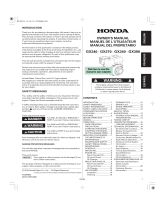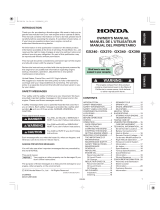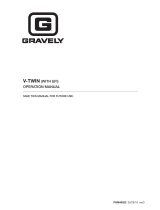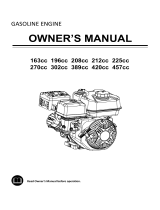
CONTENTS
PUMP
SAFETY
...........................................................................................
5
IMPORTANT SAFETY INFORMATION
.................................................
5
SAFETY LABEL LOCATIONS
.................................................................
7
CONTROLS
&
FEATURES
.........................................................................
8
COMPONENT
&
CONTROL LOCATIONS
.............................................
8
CONTROLS
...........................................................................................
10
Fuel Valve Lever
...............................................................................
10
Ignition Switch
..................................................................................
10
Choke Lever
......................................................................................
11
Throttle Lever
...................................................................................
11
Recoil Starter Grip
............................................................................
12
FEATURES
............................................................................................
12
Oil Alee System
..............................................................................
12
BEFORE OPERATION
..............................................................................
13
ARE YOU READY TO GET STARTED?
................................................
13
IS
YOUR PUMP READY TO GO?
.........................................................
14
Check the General Condition
of
the Pump
.....................................
14
Check the Suction and Discharge Hoses
........................................
15
Check the Engine
..............................................................................
15
OPERATION
.............................................................................................
16
SAFE OPERATING PRECAUTIONS
....................................................
16
PUMP PLACEMENT
.............................................................................
17
SUCTION HOSE INSTALLATION
........................................................
18
DISCHARGE HOSE INSTALLATION
...................................................
19
PRIMING THE PUMP
............................................................................
19
STARTING THE ENGINE
.....................................................................
20
SETTING ENGINE SPEED
....................................................................
22
STOPPING THE ENGINE
.....................................................................
23
SERVICING YOUR PUMP
........................................................................
25
THE IMPORTANCE OF MAINTENANCE
.............................................
25
MAINTENANCE SAFETY
.....................................................................
26
MAINTENANCE SCHEDULE
...............................................................
27
REFUELING
...........................................................................................
28
I
FUEL RECOMMENDATIONS
..............................................................
29
ENGINE OIL LEVEL CHECK
.................................................................
30
ENGINE OIL CHANGE
..........................................................................
31
3


























